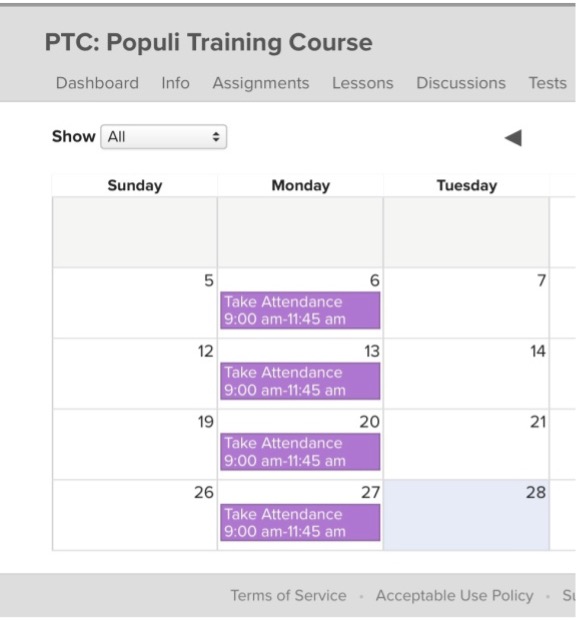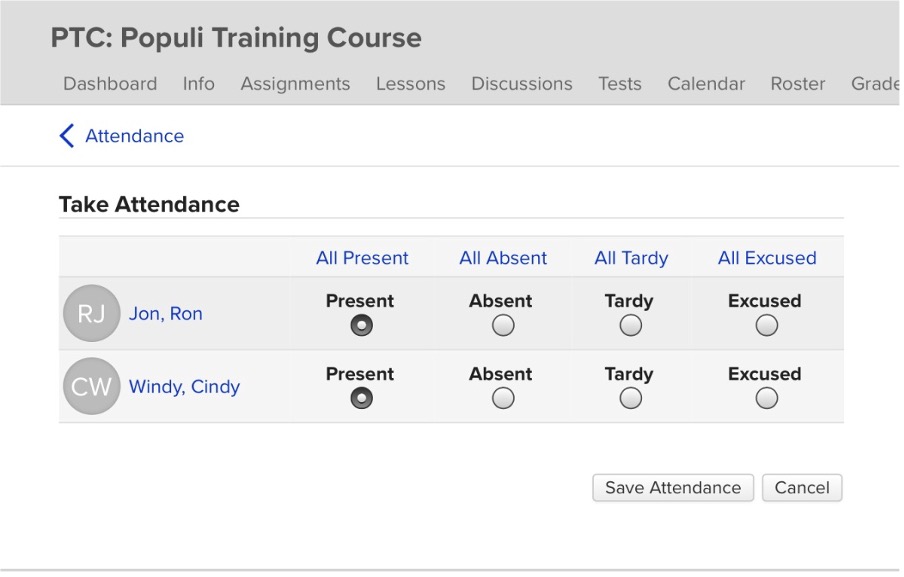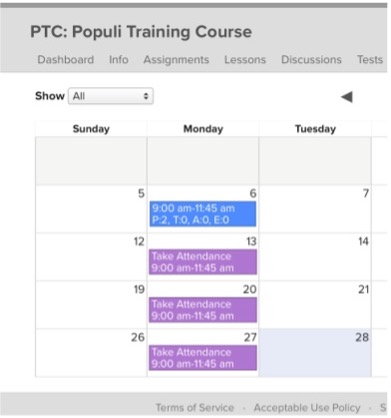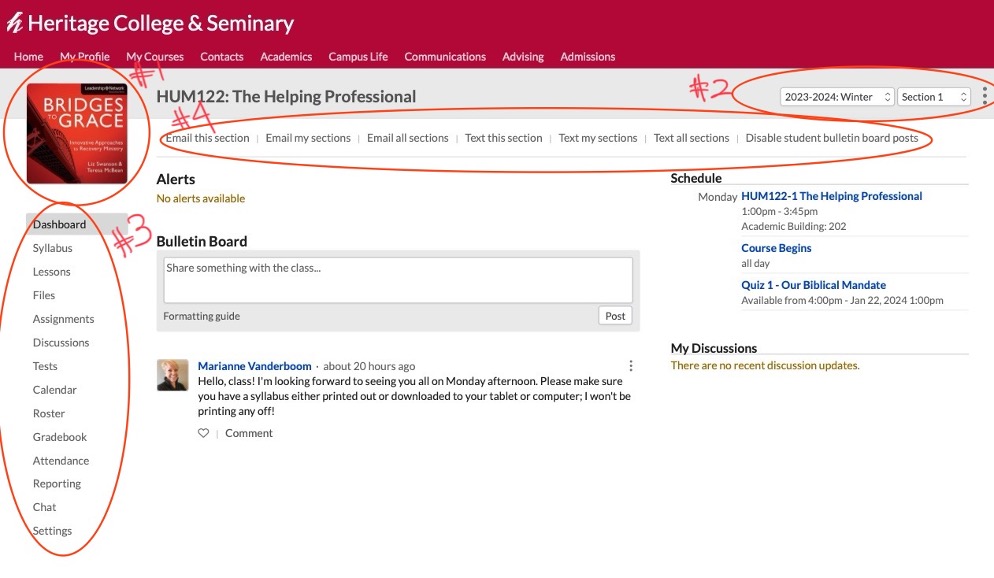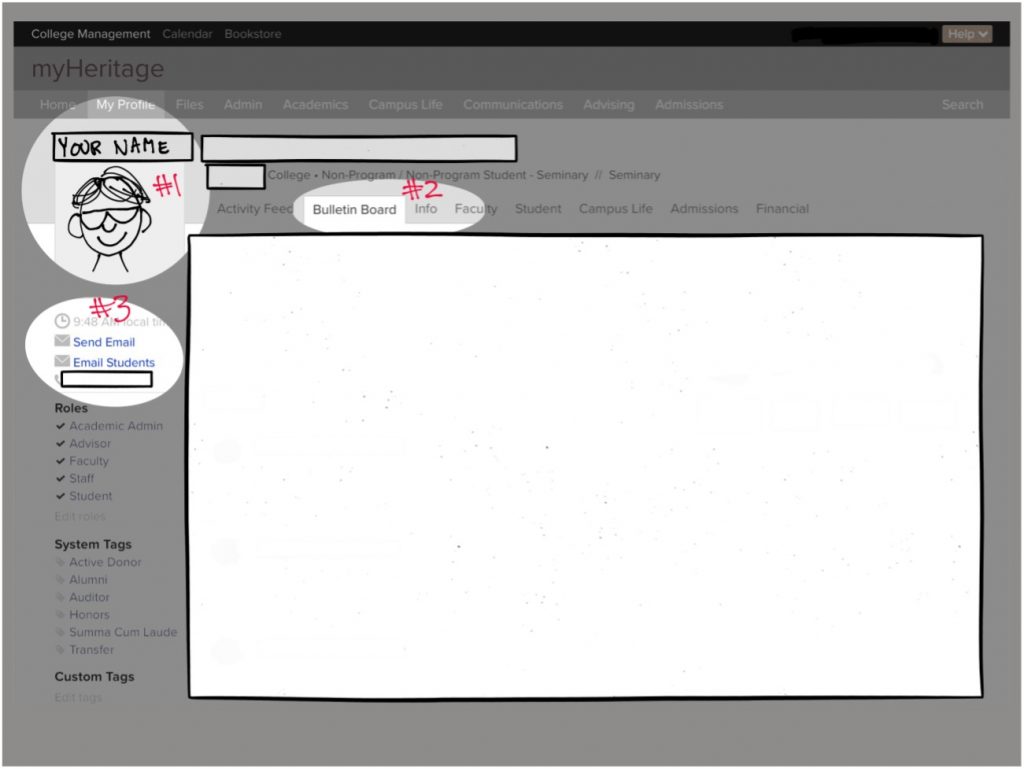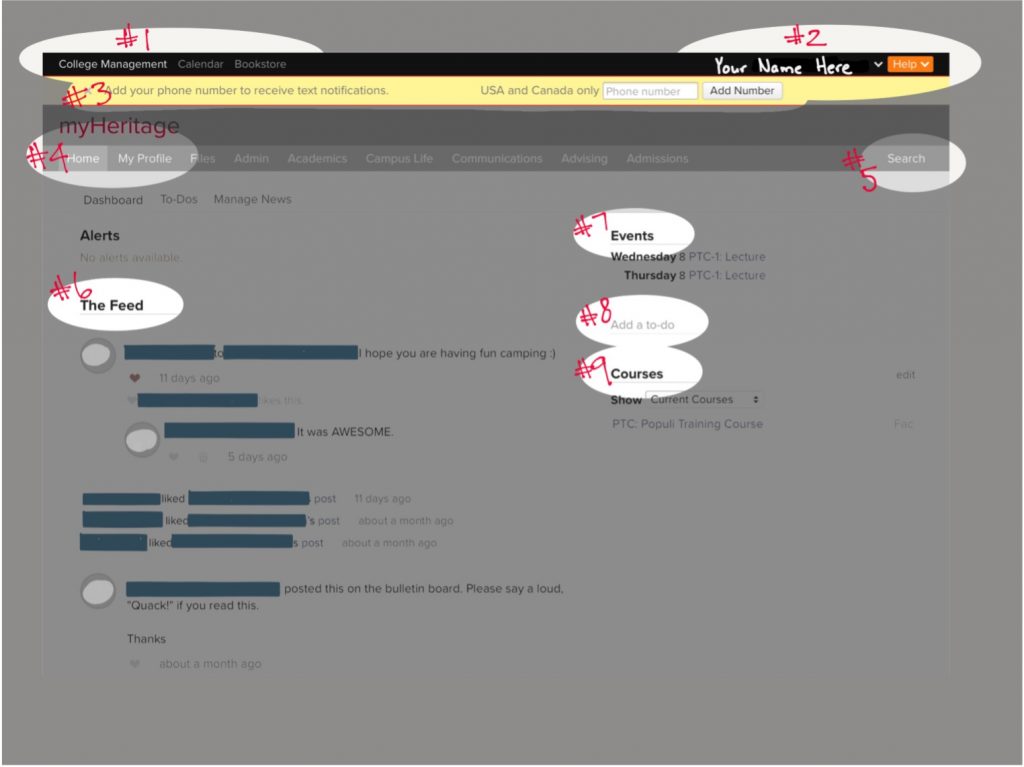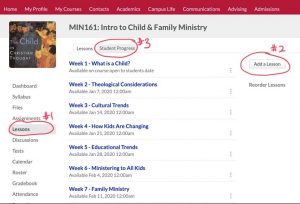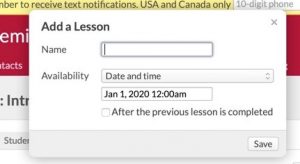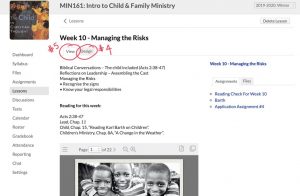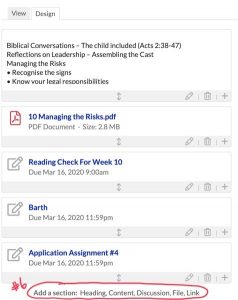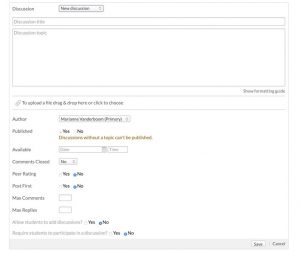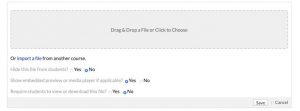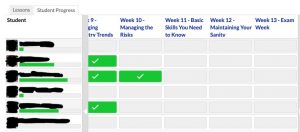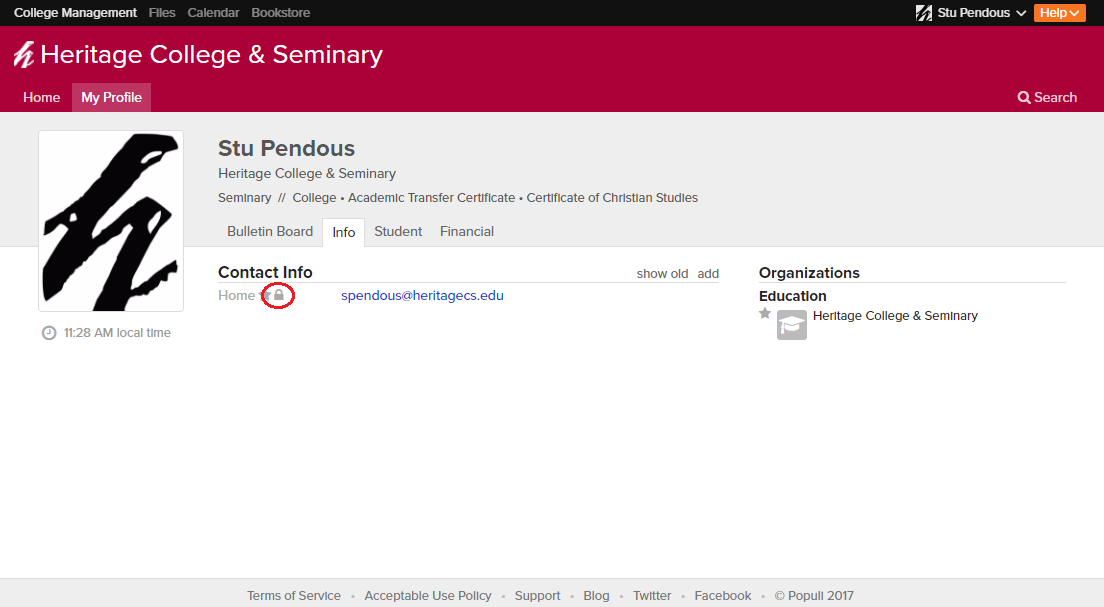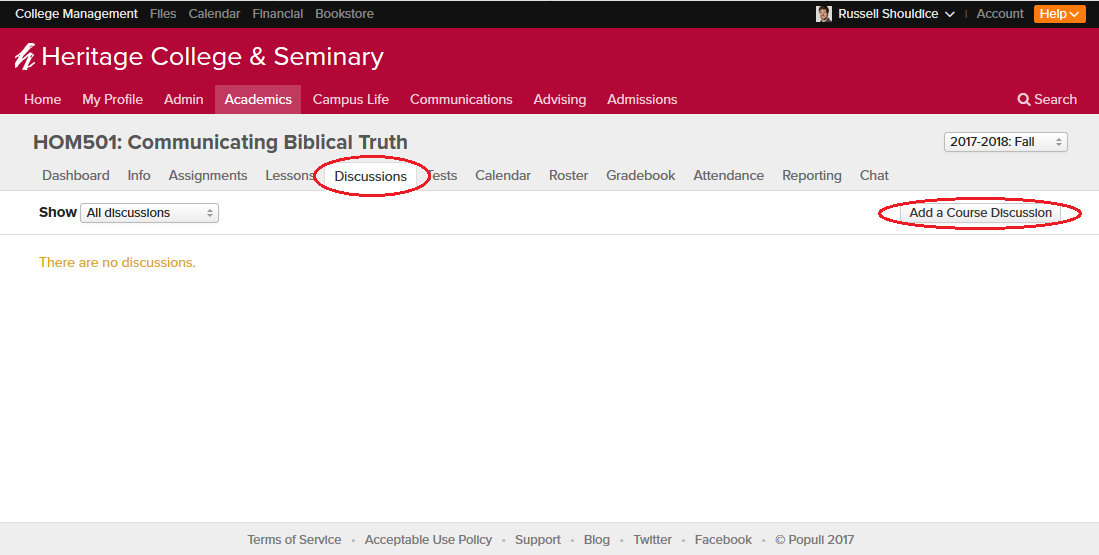Setting Up Assignments
NB: If you are teaching Section 1 and Section 23 courses, ensure your two sections are synched before you set up your grade book. Instructions for how to do so can be found by scrolling down here, under Settings.
It is through the Assignments tab that you will generate your grade book, and through the Gradebook tab that you will enter the grades. The grades entered here are automatically made available to the students, so they can easily follow their academic progress in your course. Further, students who are struggling academically will be flagged for faculty advisors to follow up, ensuring that students don’t slip between the cracks.
Grade book setup begins in the Assignments tab. This is approximately what it looks like when you first open it:
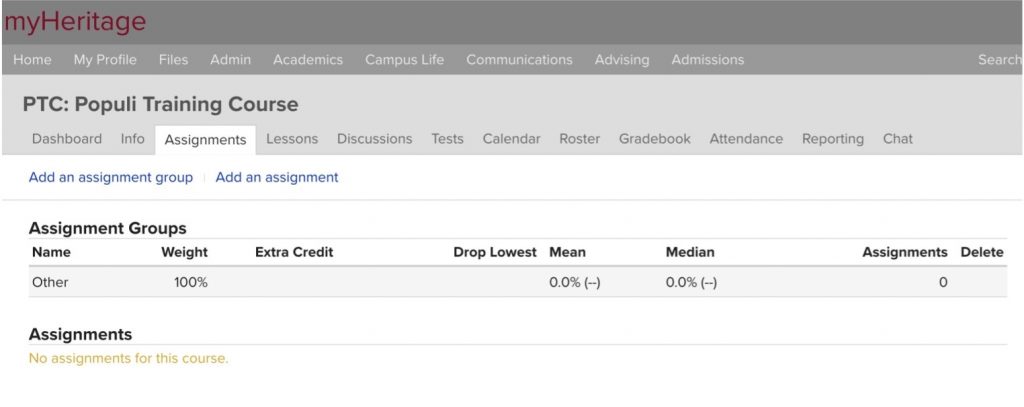
First, you will need to add assignment groups, and then assignments into those groups.
Let’s say on your syllabus, you have the following assignments listed, which make up your final grade:
- Reading and Participation: 15% of the grade. Each class, you do a reading check out of 10, for a total of 12 reading checks/participation grades.
- Quizzes: 15% of the grade. Every other week, there is a quiz out of 10 marks, for a total of 6 quizzes.
- A research essay: 25% of the grade.
- A mid-term exam: 20% of the grade.
- A final exam: 25% of the grade.
Assignment groups establish the overall weight of the type of assignment toward the final grade. So, each of the bullet points above will need its own assignment group (even if there is only one assignment in the group, like the essay, mid-term, and final term). Click on the “Add Assignment Group” button, and you will get a little pop-up, like this:
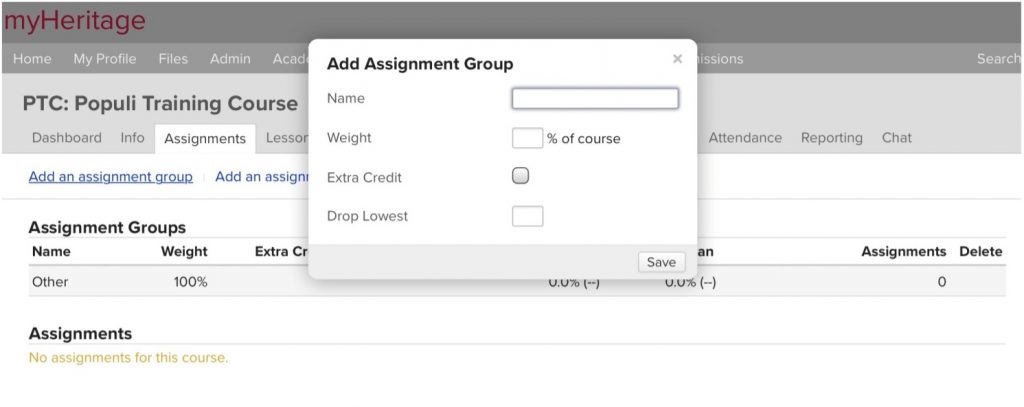
Type in the name of your assignment group (Reading, Quizzes, Essay, Mid-term, and Final, for example), indicate how much of the final grade it is worth, and, if you want to drop the lowest couple of grades of a large category (say the lowest result of the 12 grades for reading), add that, as well. Then click “save”. You will do the same for each of the groups you need.
Once you have all your assignment groups listed, with their weight, you need to add assignments into those groups. Click the “Add assignment” button, and you will get this pop-up box:
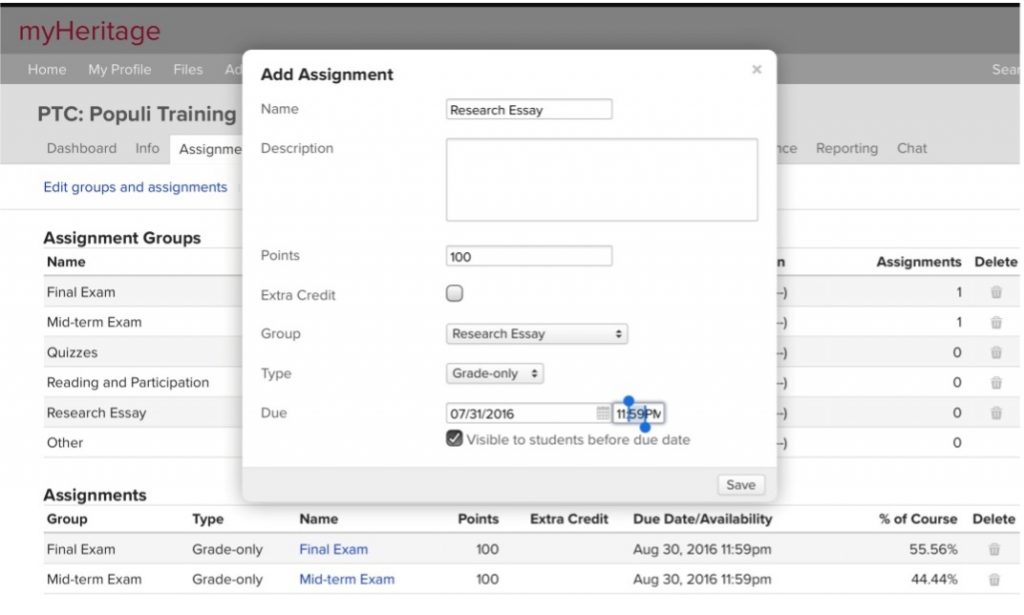
- Name the assignment. If there is only one assignment in the group (such as the research essay) the assignment can have the same name as the group. If there are multiple assignments within that group (such as 6 quizzes), each assignment needs a unique name (Quiz #1, for example).
- Select the assignment type. The major types are as follows.
- A grade-only assignment means that students will submit an assignment to you outside of myHeritage (such as a paper copy of an essay or a paper quiz written in class), which you will grade and enter only the grade. If you are not confident using myHeritage and rely on paper submissions (which is perfectly ok!) this is the type of assignment you will want to use.
- A file assignment means that students will submit the paper electronically on myHeritage.
- An essay assignment means that the students will write the essay on myHeritage. This assignment type is best suited to short essays that do not require footnotes. You can create rubrics to use to grade the assignment on myHeritage.
- A test assignment will generate an automatic online test which will then need to be populated with questions. If you use a lot of quizzes or you have multiple-choice type exams, myHeritage can do a lot of the grading for you if you use this type of assignment. If you would like further instruction in setting up and using the Tests feature of myHeritage, please see here.
- Set the points for which the assignment is worth. This is not the weight of the assignment, but what you will grade the assignment out of. Be aware that if you have multiple assignments within a group (like 6 quizzes worth a total of 15% of the overall mark), you need to set the points equal for each of those types, otherwise the assignment with the higher number of points will have more weight toward the final grade. Also be aware that if your assignment type is “test”, the points for which you set this assignment will be the number of points which you need to assign in the online quiz. For grade-only assignments, files, and essays, it is fine to set all points to 100 and then enter the grade as the percentage rather than whatever raw score you give.
- Select the group in which the assignment will be found. Remember, some groups may have only one assignment.
- Set the date when the assignment is due. This will automatically generate reminders to place in your and your students’ calendars.
All done! Hit “save” and repeat for every assignment students will complete. You will notice that the website automatically adjusts the relative value of each assignment, based on what groups you have set up, and how many assignments are in each of those groups.
Entering Grades in the Grade Book
If you click on the Grade Book tab, you will now find a spreadsheet with each assignment and each student in your class listed. It will look like this:

To enter grades, simply click the “Edit grades button”. The grade book will go live:

You can now enter the grades, and myHeritage will calculate the percentages and apply the grades toward the final grade for the course. If you have entered grade-only assignments with each out of 100, you will enter grades here as a percentage rather than as a raw score. If a student has failed to complete the assignment, enter a grade of 0. You must not leave spaces blank or the final grade will not be accurate. Click “Save Grades” when you are finished. Students can now view their grades.
If you have Section 1 and Section 23 students, use the drop-down menu in the upper-right corner of the page to select the next section, and repeat.
If, at the end of the semester, you wish to override a final grade, you are able to do so. For example, if a student has received a grade of 48%, but you wish to allow that student to pass, you can override the 48% and give the student 50% by clicking “Edit grades” and simply overwriting the final grade.
Further, at the end of the semester, when all your grades are in and attendance records are accurate, use the “Finalise course” button to submit your grades to the registrar’s office.

